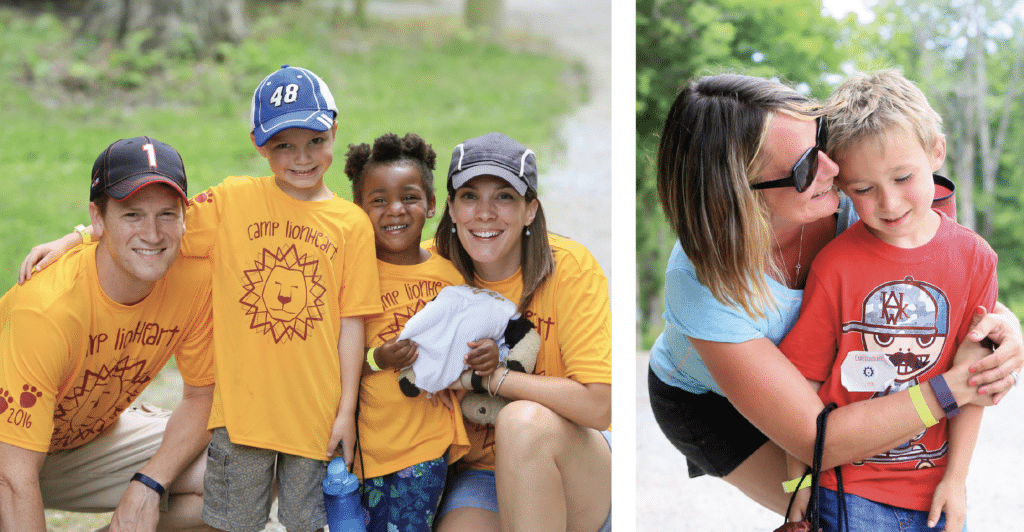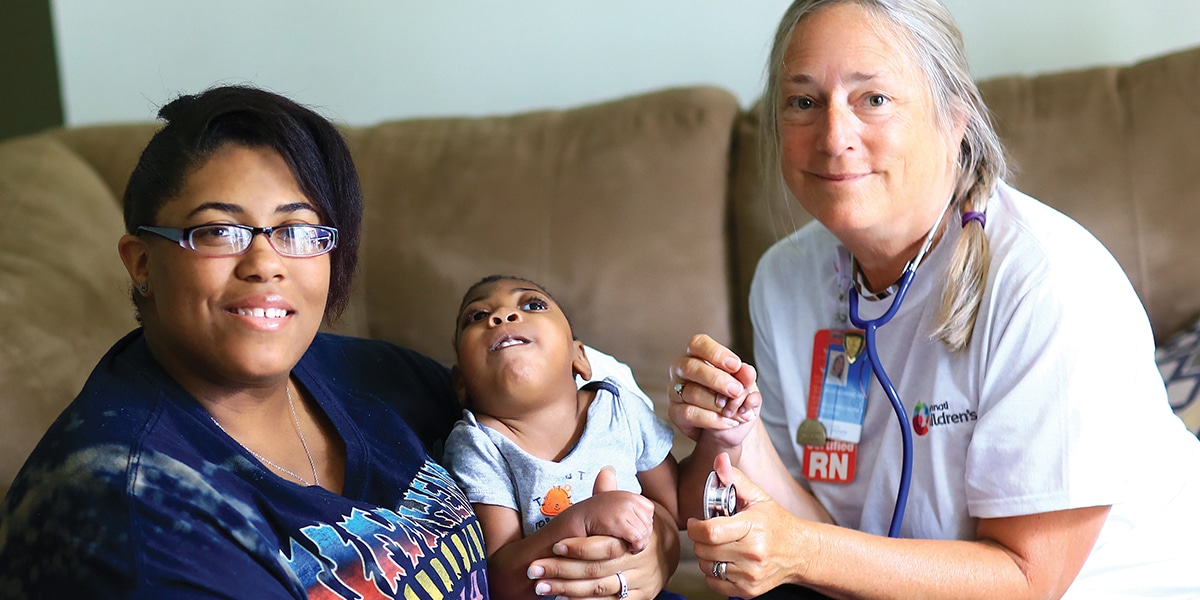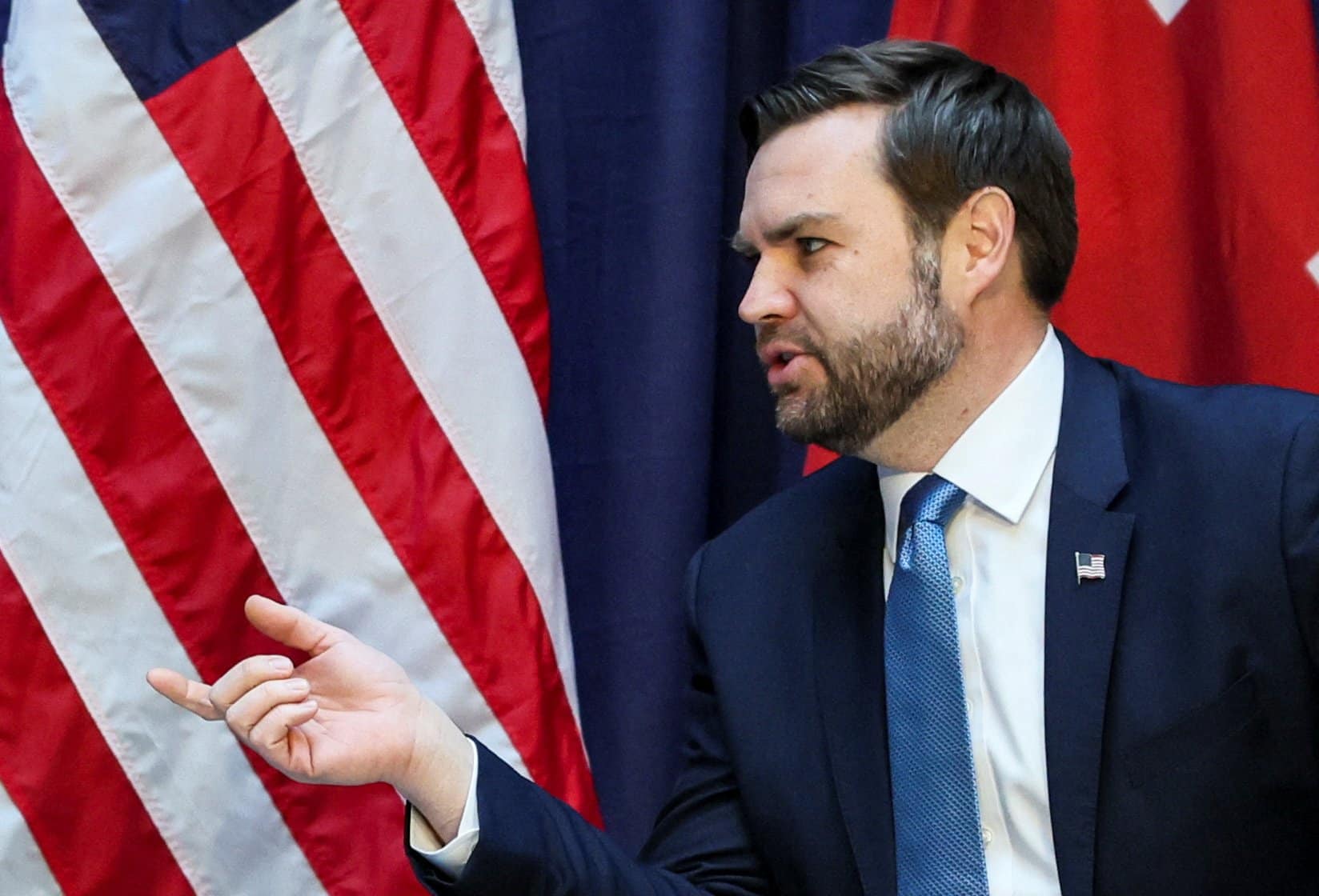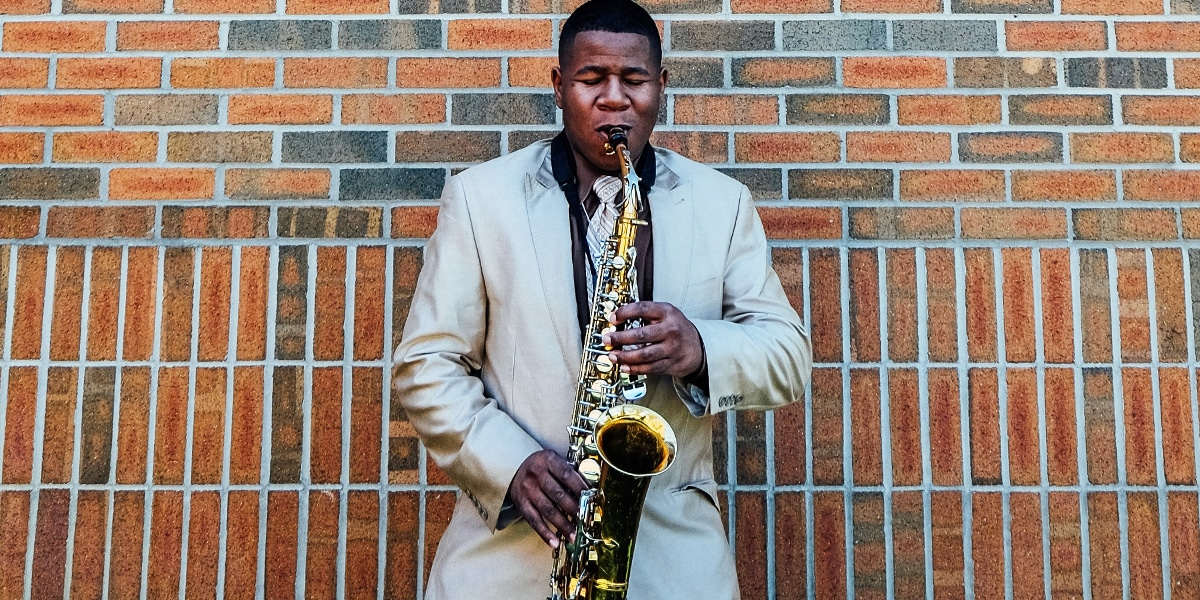This pediatric hospice models respect for life, brief as it may be.
Kiana Carter was a youthful first-time mom. Her husband, Artrez, had the same optimistic credentials. They were excited, but the obstetrician cut a wide swath of alarm into their anticipation.
The doctor told them at the gender reveal that their son-to-be was unlikely to live. Kiana remembers the moment.
“Why, why, why, God? I don’t know if I can handle this. But let me raise him. Let me love him. I will serve you the rest of my life.” AJ is her miracle baby.
Hospice for Infants?
Hospice is the gold standard for end-of-life care. But it’s designed for those of us who have lived long enough to share in life’s adventures. Elders have known life’s wear and tear, have made lots of choices, and may even be ready to surrender.
But what if the end comes all too close to life’s beginning? What if the child you’re expecting faces a challenge? What if the delicate nature of this new, welcomed life is threatened by extreme limitations? What if the first meeting outside the womb might also be the last? Where is the hospice for stillborns or fragile newborns? Who will walk with those who cannot walk themselves? Who will help their parents and caregivers? Who will prepare the family? For families across the Midwest, it would be StarShine.
AJ Puts the Star in StarShine
AJ (Artrez Jr.) Carter is one face of StarShine. When AJ faces front, his is a typical little-boy face, if a bit tiny. But change the angle even slightly and AJ’s life-limiting burden becomes all too apparent. AJ was born with a rare occipital encephalocele at the back of his head. It resembles a gauze-covered balloon.
AJ’s encephalocele has increased in size, as has AJ, though not in keeping with the growth charts. Delicate and susceptible to leaks and infections, his encephalocele is heavy enough to prevent this little boy from lifting his head.
He is subject to brief seizures. So, while he is 3 years old, he can’t crawl or walk, run or climb. What he can do is steal your heart.
Developmentally, AJ cannot speak but shows affection for his parents and grandparents with a happy agitation. This love is mutual, shown in soothing caresses, careful holding, and superb care. A still larger circle of care embraces this toddler who can’t yet toddle. That circle is called StarShine.
Comfort and Caring
StarShine, a hospice focused on pediatric palliative care, is one of only a few in the United States. It’s part of the home health-care department at Cincinnati Children’s Hospital Medical Center. It’s no stretch to call it a ministry. It’s no exaggeration to call it extraordinary. Staff members, without exception, exude an optimistic enthusiasm and dedication to partnering with their tiny clients. They embrace their careers as a vocation. When called, they rise in the middle of the night to be StarShine to a child in crisis or a family fearful of a new symptom, or to provide comfort in the presence of dying and death.
The constellation called StarShine is shaped by many talents. The pediatric nurses are experienced specialists in chronic, life-limiting, or terminal conditions. But StarShine also offers social services, a chaplaincy, counseling, physical therapies including massage, and assistive equipment like special beds or lifts, as well as music and art therapies. “We meet you where you are” is their watchword.
Preparing for Birth
Young AJ and his parents are familiar with almost every facet of StarShine. When their first child-to-be was 18 weeks in utero (and very playful there, his mother says), they learned of his life-threatening diagnosis. The expectant parents were referred by their obstetrician to StarShine’s perinatal program, which accompanies the parents from diagnosis to delivery.
Kiana and Artrez were prepared both to meet their child and to say goodbye to him. Marcella Meyer, bereavement coordinator, and chaplain Judy McBride met with them to consider a birthing plan. Did they want aggressive measures? Did they want to have a religious ritual—a Baptism or a blessing—in their faith tradition? StarShine knows whom to call. Without a plan, Meyer says, “The default is to whisk the baby away.”
When AJ was born at 39 weeks, Kiana got to hold him right away. The extended family took photos, and imprints were made of his tiny hand and tiny foot. His parents were encouraged to decorate them and to record all their impressions of their highly anticipated firstborn. They made a memory box. They chose to keep their baby out of the operating room and in their arms. Why consider a surgical intervention for a child too delicate to survive it? They were prepared to initiate funeral arrangements.
But they didn’t need them. AJ lived.
Hospice Is Derived from Hospitality
Kiana and Artrez got to take their newborn home. Instructions went far beyond the usual feed/sleep/change/repeat cycle, but StarShine is well equipped to care for children and young adults with life-limiting conditions.
StarShine’s Hospice Program anticipates about six months or less. But rather than spend this precious time in a clinical setting, StarShine enables newborns to sleep in their own cribs, explains Susanne Evans, StarShine’s clinical director. “Whatever their journey entails, the family can be together in their home. The nurse sometimes stays with them because the family knows the baby will die in their home. This can be scary. The team can handle all the details so that the family can focus on the child.”

Denise Gaige, nursing coordinator, says, “I love the pace of StarShine. The focus is on family comfort, not cure.” She finds her Catholic faith central to her work at StarShine. “I found our parish church the place where I could contemplate the first [infant] death I was experiencing.” She stops there to pray and process. “I am helping with a person’s final transition—to heaven. It’s important work!
“Our nurses do a lot more than take a temperature,” Gaige says. “Usually we begin or end our visits by sitting at the kitchen table and asking, ‘How’s things?’ We are part of their team.”
Transitions
AJ long ago exceeded those six months of hospice care, so he was “transitioned.” That’s what StarShine calls it. Physician-ordered skilled medical attention continues, with support from the extensive StarShine team. The Transitions Palliative Care program is also available to young people diagnosed later in their lives with a serious and/or chronic illness that may limit the number of their days, but need not require them to live in pain and sadness. Child life specialists work with siblings.
For AJ, StarShine Transitions includes skilled-nurse visits as well as on-call visits when needed. Social worker Mary Dwyer visits him monthly and helps to coordinate or suggest other services. StarShine team members can provide many services at the home that might otherwise require a hospital or clinic visit, such as blood draws and even transfusions. When the StarShine music therapist visited AJ and his parents, AJ made some music on a keyboard with his feet, which delighted him—and everyone present.
For Dwyer, this arena of social services is “life-giving and inspiring.” She has seen Kiana and Artrez grow in love for one another and in the strength they offer to AJ. She sees it as “the gift we get.” Susanne Evans, clinical director, believes that the StarShine team has contributed significantly to AJ’s longevity by enabling his parents to care for him at home.
‘A Sacred Journey’
It may appear unseemly to speak of funerals when a child is alive. For the moment, AJ’s parents have been able to file away the plans made when they didn’t expect to bring their baby home. StarShine frequently works with parents who don’t have this opportunity. Marcella Meyer uses her PhD in sociology and her 12 years of on-the-job experience to serve as bereavement coordinator at StarShine.
When a baby dies in a clinical setting, StarShiners empower parents with a sense of control. Do they want time with their newborn? Whom do they wish to have present? What kind of care do they want for an infant born with a terminal condition? Medical interventions will probably take the child from them, StarShine points out. Do they want that? Will they want photos? StarShine can make arrangements.
Chaplain Judy McBride describes the death of a child as the “worst loss anyone can endure.” She confesses that she has learned a lot from parents about how to cope with such a loss. She relies on David’s psalms of lament as scriptural proof that God can handle human anger—even at an “out-of-order” death. McBride says, “I meet the most amazing people. . . . For me, it’s a sacred journey.”
Meyer recalls a father who was firm about excluding an older brother from the experience of the birth of a little sister not expected to live. As she and McBride worked with the family, that resolve evaporated and the brother became a part of both the joy and the sorrow. He even wrote a story for his little sister, a story he read to her during the few hours of life she shared with her family. StarShine continues that journey of bereavement with families for two years.
While this may seem like the natural conclusion of StarShine’s involvement, they do still more. Camp LionHeart is a weekend grief camp for kids, teens, and parents in families who have lost a child. It has all the hallmarks of any summer camp with swimming, hiking, and the like, but it also offers structured group counseling with licensed facilitators. StarShine finds that having fun can be hard for family members who are grieving, but gathering with others who have had the same experience can help to ease that burden.
The Next Chapter
Kiana Carter says that every child writes his or her own story. AJ is writing a new chapter as the surgeons at Children’s Hospital removed the encephalocele in a daylong operation last August. Because he is stronger than at birth, his prognosis is promising, though his recovery from the surgery was complicated due to infections that kept him hospitalized.
Kiana and Artrez Carter know that StarShine will continue their journey with them, making memories together and providing guidance and courage as tough decisions are required. The multifaceted team pledges to meet the Carter family—and all the families whom they serve—where they are. That means the world to families who find themselves in a place no one wants to be—facing fatality where only new life was expected. StarShine indeed gives light in the darkness.








